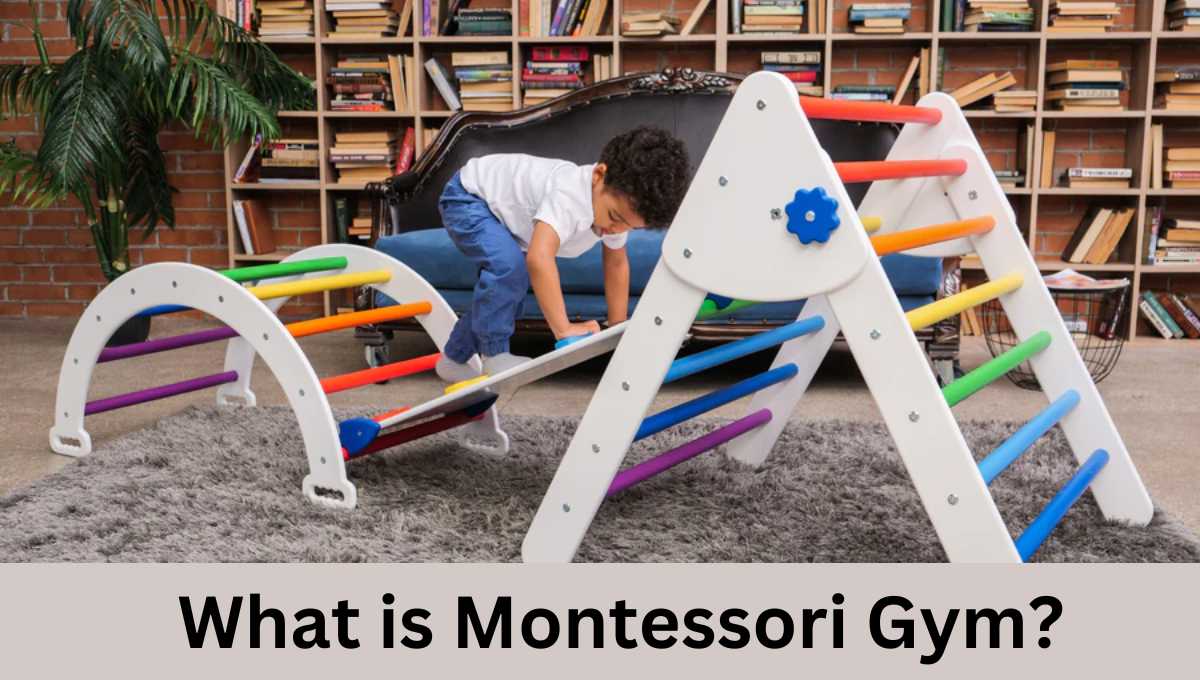What is Montessori Gym?
Montessori gym involves creating a space where children can learn and play using Montessori principles. A Montessori gym is a special place for children to play and learn based on the Montessori approach. In this gym, children are encouraged to explore and discover on their own. It’s designed to be a safe and stimulating environment where kids can engage in activities that promote physical development, independence, and creativity.
Key Features
Child-Centered Learning
Montessori gyms focus on what interests the child. Kids are given the freedom to choose activities and toys that capture their attention.
Natural Materials
Toys and equipment in a Montessori gym are often made of natural materials like wood and fabric. These materials are safe, eco-friendly, and provide a tactile experience for children.
Structured and Unstructured Play
Children participate in both structured activities, like yoga and organized games, and unstructured play where they can explore freely and use their imagination.
Mixed Age Groups
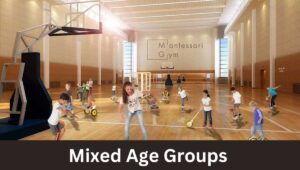
Montessori gyms often have children of different ages together. This promotes learning through peer interaction, where older kids can mentor younger ones, fostering a sense of community and cooperation.
Independence
Montessori gyms encourage children to do things for themselves. This could be as simple as choosing an activity, cleaning up after play, or putting away toys. Independence is a core Montessori principle.
Observation and Guidance
Teachers or caregivers observe children closely to understand their interests and developmental needs. Based on these observations, they provide appropriate activities and guidance to support each child’s growth.
Why Montessori Gym Matters?
Montessori gyms provide a holistic learning experience. They help children develop not only physically but also emotionally and socially. By promoting independence and curiosity, Montessori gyms lay the foundation for a lifelong love of learning and exploration.
Designing the Montessori Gym Environment
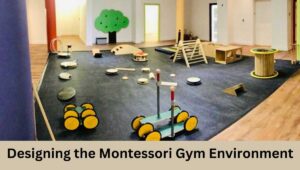
Designing a Montessori gym environment is all about creating a space that encourages learning, exploration, and independence. Here are some key aspects to consider in simple language:
Open and Inviting Space
- The gym should be open and spacious, allowing children to move freely without feeling cramped.
- Bright, natural lighting and cheerful colors make the space inviting and conducive to learning.
Organized Activity Stations
- Arrange the gym into different stations, each offering a specific activity or exercise.
- Clearly label and organize the materials so that children can easily find what they need.
Natural and Sustainable Materials
- Use materials made from wood, fabric, or other natural elements. These materials are safe, eco-friendly, and pleasant to touch.
- Avoid plastics and synthetic materials as much as possible.
Age-Appropriate Exercise Equipment
- Provide exercise equipment suitable for different age groups. For example, soft play mats for toddlers and climbing structures for older children.
- Ensure that the equipment is sturdy, safe, and easy for children to use independently.
Montessori-inspired Physical Activity Tools
- Include Montessori-inspired tools like balance boards, sensory balls, and tunnels. These items enhance balance, coordination, and sensory awareness.
- Rotate these tools regularly to keep activities engaging and fresh for the children.
Safety Measures
- Childproof the gym to eliminate sharp edges and potential hazards.
- Have adult supervision at all times to ensure the safety of the children.
- Keep a first aid kit handy for minor injuries.
Comfortable Seating and Rest Areas
- Provide cozy corners with cushions and bean bags where children can relax and read.
- Incorporate a quiet space where children can unwind if they feel overwhelmed.
Interactive Wall Displays
- Create interactive displays on walls, such as a chalkboard or magnetic board, where children can draw, write, or play educational games.
- Change these displays periodically to maintain children’s interest.
Plants and Nature Elements
- Introduce indoor plants and natural elements like small rocks or shells to connect children with nature.
- Teach children about the plants and elements, fostering a sense of respect for the environment.
Personalized Spaces
- Allow children to personalize their spaces with their artwork or small belongings, promoting a sense of ownership and belonging.
Montessori Gym Activities
In a Montessori gym, activities are carefully designed to promote physical development, independence, and creativity while aligning with Montessori principles.
Yoga and Mindfulness Exercises
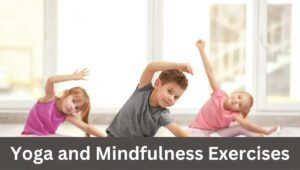
- Children participate in simple yoga poses and breathing exercises. These activities promote flexibility, balance, and relaxation.
- Yoga sessions often include storytelling, making it engaging and enjoyable for kids.
Montessori-inspired Games (Sensorial Activities)
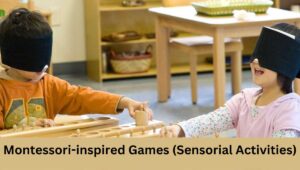
- Games are designed to stimulate the senses. For example, a blindfolded touch-and-guess game where kids identify objects by touch.
- Sorting activities, where children categorize items by color, shape, or texture, enhancing their sensory awareness.
Free Play Sessions

- During free play, children can explore various Montessori materials and toys independently.
- They can choose activities based on their interests, fostering a sense of autonomy and decision-making.
Structured Montessori Activities

- Activities like bead threading, where children string beads onto a string, enhancing their fine motor skills and concentration.
- Puzzle solving, using Montessori-style puzzles, encouraging problem-solving and spatial awareness.
Nature Walks (Weather Permitting)

- Outdoor activities like nature walks allow children to explore the natural world.
- Guided nature observations, where children learn about plants, insects, and the environment, fostering a love for nature.
Obstacle Courses
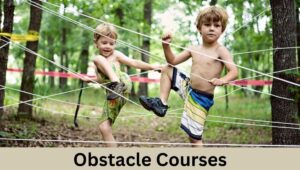
- Design simple obstacle courses using soft play equipment. Children climb, crawl, and balance, enhancing their gross motor skills and coordination.
- Obstacle courses can be personalized to match the children’s developmental levels and interests.
Art and Creativity Corner
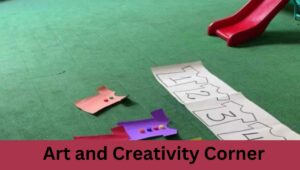
- Provide art materials like crayons, paints, and clay, allowing children to express their creativity.
- Art activities promote fine motor skills, imagination, and self-expression.
Music and Movement
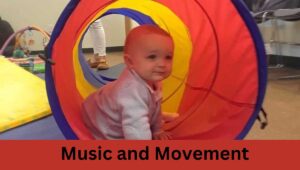
- Engage children in rhythmic activities and dancing to music.
- Provide simple musical instruments like shakers or drums, encouraging creativity and coordination.
Storytelling and Reading Sessions
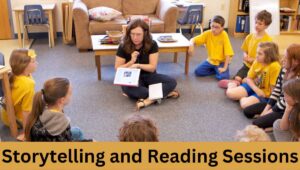
- Gather children for storytelling sessions, using books that emphasize important values and lessons.
- Encourage children to participate by asking questions and discussing the stories, promoting language development and critical thinking.
Cooking and Nutrition Activities
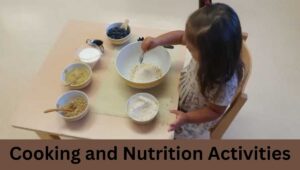
- Simple cooking activities, like making fruit salads or sandwiches, teach children about nutrition and healthy eating habits.
- Children can be involved in age-appropriate tasks, such as washing fruits or spreading ingredients, enhancing their practical life skills.
Promoting Independence and Responsibility in Montessori Gym
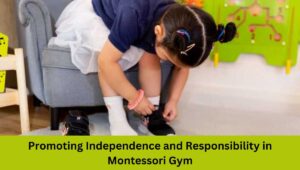
Encouraging Self-Directed Activities
- Children are allowed to choose activities based on their interests and curiosity.
- They learn to make decisions, building confidence in their choices.
Teaching Everyday Skills
- Kids are taught practical life skills like cleaning up after play, putting away toys, and washing hands independently.
- These skills foster a sense of responsibility and self-sufficiency.
Freedom within Limits
- Children have the freedom to explore and play, but within set boundaries.
- Clear guidelines help them understand what’s acceptable, promoting responsible behavior.
Child-Accessible Environment
- Materials and toys are arranged at children’s eye level, making it easy for them to access and return items.
- This setup encourages self-reliance as children can independently get what they need.
Encouraging Problem-Solving
- Children are encouraged to solve simple problems on their own.
- Teachers offer guidance rather than immediate solutions, promoting critical thinking and independence.
Mixed-Age Interactions
- Older children often help younger ones, fostering a sense of responsibility and empathy.
- Younger children learn from older peers, promoting a collaborative learning environment.
Acknowledging Efforts and Progress
- Children’s efforts, no matter how small, are acknowledged and praised.
- Positive reinforcement boosts confidence and motivates them to take on more responsibilities.
Respectful Communication
- Adults and peers communicate respectfully, teaching children how to express themselves and listen to others.
- Respectful communication builds self-esteem and encourages responsible interactions.
Setting Realistic Expectations
- Expectations are set based on each child’s abilities and developmental stage.
- Realistic goals ensure that children can achieve tasks, boosting their confidence and sense of responsibility.
Modeling Responsible Behavior
- Adults in the Montessori gym model responsible actions and manners.
- Children learn by observing, so positive adult behavior reinforces responsible conduct.
Promoting independence and responsibility in the Montessori gym empowers children. By providing them with the tools and opportunities to take charge of their activities, make decisions, and contribute positively, they develop essential life skills that prepare them for future challenges.
Evaluation and Improvement in Montessori Gym
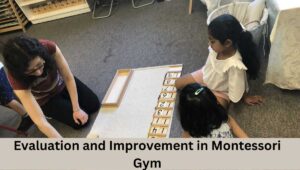
Continuous Observation
- Teachers and caregivers closely watch how children interact with activities and materials.
- Observations help understand individual needs, interests, and progress.
Tracking Children’s Progress
- Children’s skills, interests, and social development are tracked over time.
- Tracking progress helps identify areas where each child excels and where they might need additional support.
Feedback from Parents and Children
- Regular feedback is collected from parents about their child’s experiences in the gym.
- Children’s opinions and feelings about the activities are also valued, encouraging them to express themselves.
Identifying Areas of Improvement
- Based on observations and feedback, areas needing improvement are identified.
- This could include adding new activities, rearranging the layout, or introducing new materials.
Adapting Activities and Environment
- Activities are tailored to meet the changing needs and interests of the children.
- The gym’s layout and materials are adjusted to create a more engaging and effective learning space.
Professional Development
- Teachers and caregivers participate in training sessions and workshops.
- Continuous learning ensures that the staff is updated with the latest teaching methods and child development techniques.
Collaborative Problem-Solving
- Teachers, parents, and even children collaborate to find solutions to challenges.
- Working together fosters a sense of community and shared responsibility for the gym’s success.
Celebrating Achievements
- Milestones and achievements of both individual children and the gym as a whole are celebrated.
- Recognition boosts morale and motivates everyone to contribute positively.
Regular Assessments
- Periodic assessments measure the effectiveness of the gym’s activities and teaching methods.
- Assessments guide future planning and improvements.
Flexibility and Adaptability
- The gym’s staff remains open to change and new ideas.
- Being adaptable allows for swift adjustments to ensure that the learning environment stays dynamic and engaging.
By continuously evaluating, seeking feedback, and being open to change, the Montessori gym can evolve into a vibrant, responsive, and enriching space. This ongoing process ensures that children receive the best possible education and support for their overall development.
